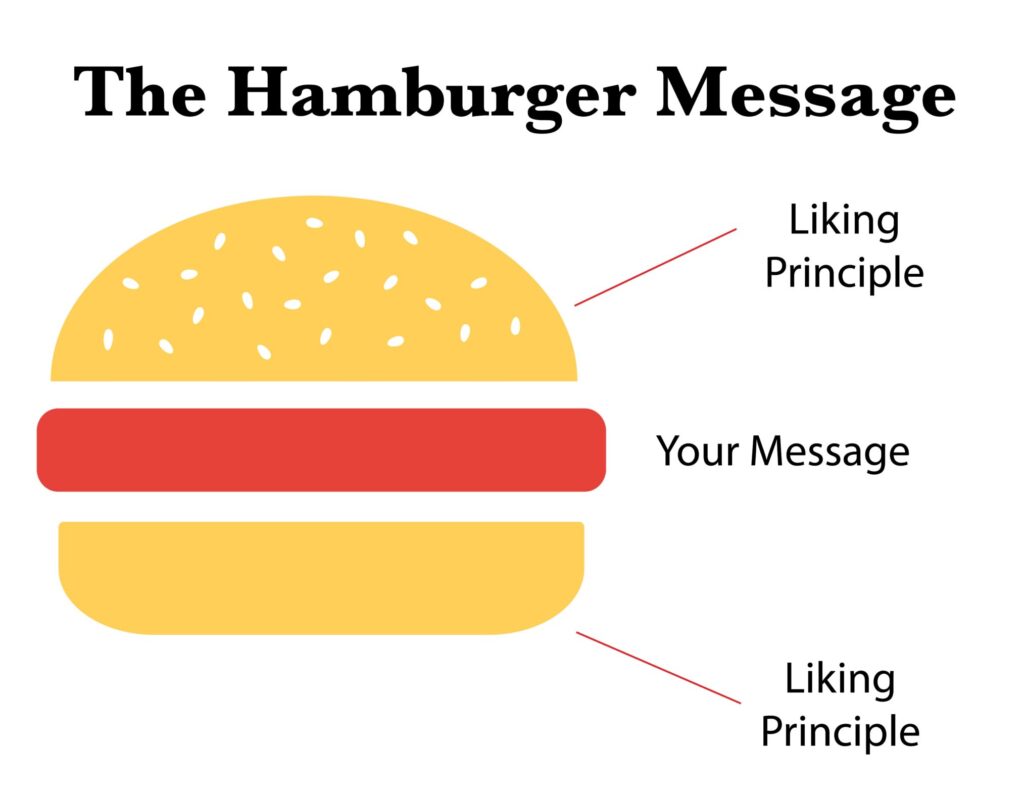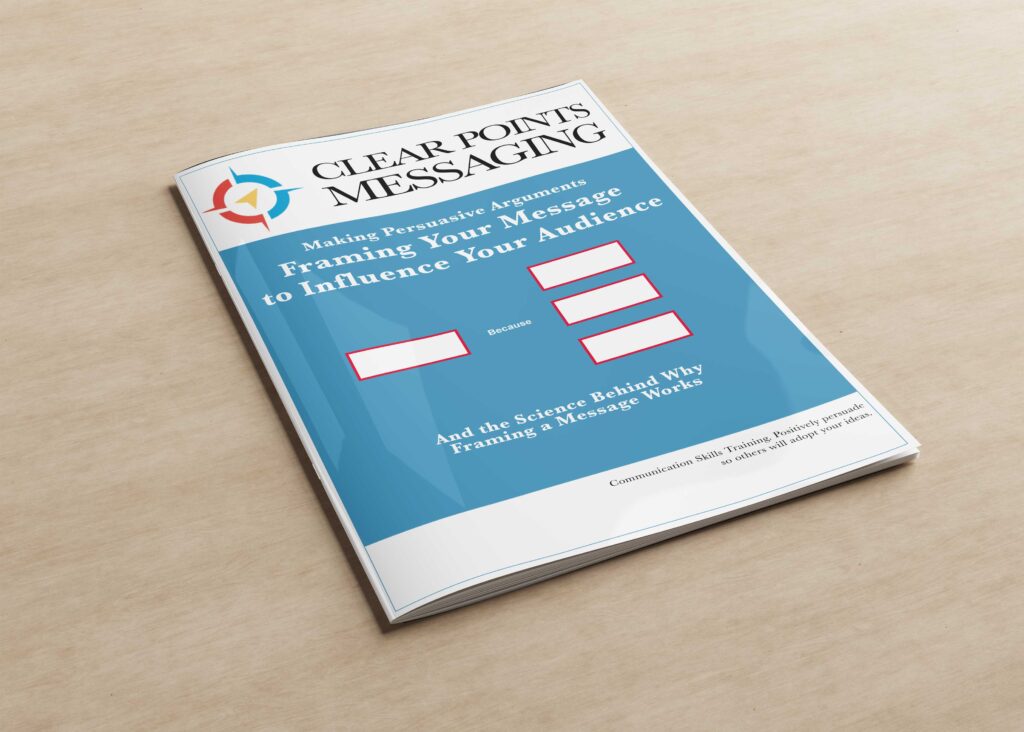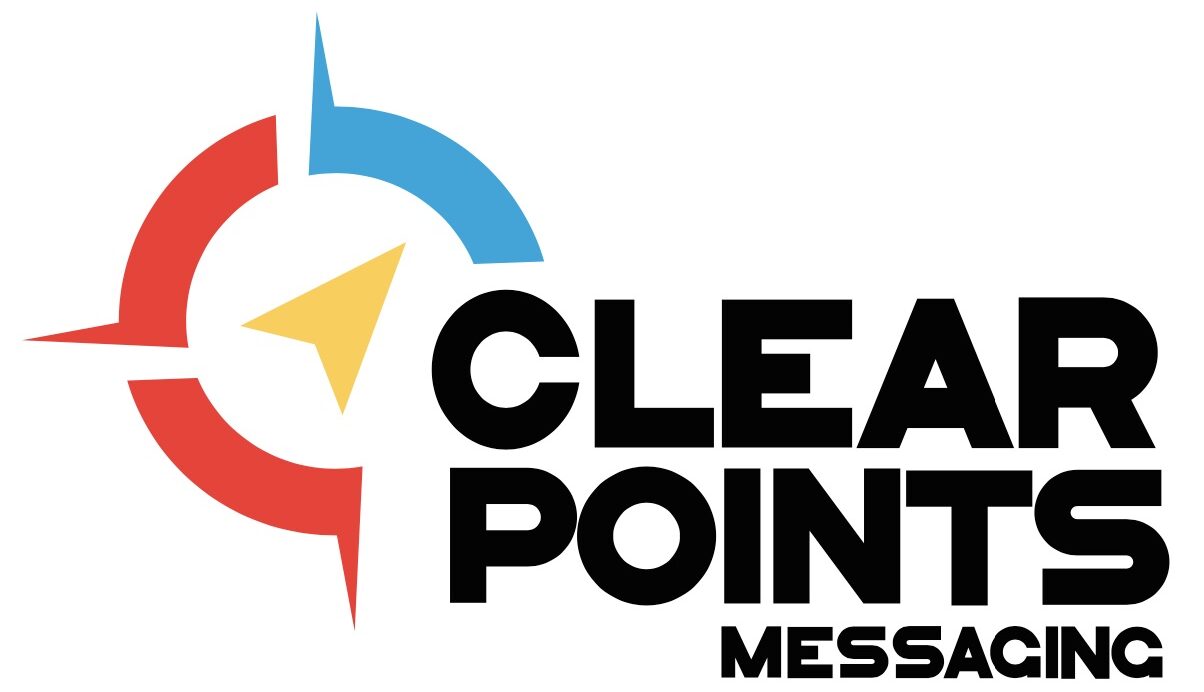Framing Your Message Workbook

Frame Your Message to Influence Others
If you cannot clearly and concisely express or explain an idea, then it is difficult for your listener to understand and know what to do with your message.
If it is difficult for someone to understand what you are saying, they will immediately distrust it. That’s because we have a shortcut in our brains that tells us when something is complicated or is not understood, then it is dangerous.
People are naturally skeptical of what they cannot understand. If you speak in a way where people cannot understand you, then people will not follow your recommendation.
Why Message Frames Work
Framing a message gives you the ability to put an invisible box around your message. Communicating is like taking a professional picture
Photographers use framing so viewers will focus on the subject in their photo. Framing highlights what the artist wants the viewer to see in his or her portrait.
Framing in communication is no different. The way you craft your message or express an idea creates a frame, highlighting the meaning you want your listener to hear from your message.
Why this Workbook
This workbook gives you a simple way to get your idea on paper, whether you’re writing a short email—-or say—-you need to make a quick point that contradicts the opinion of your boss.
If you know how to frame your message, you might even win.
This workbook is designed to go through fast so you can quickly get clarity and move on.
The Clear Points Messaging workbook goes over the fundamentals of sound communication, how to build a message in two classic frames, and the science on why it works.
We Have Exercises for the Recommendation Frame & the Hamburger Frame
These are the two most powerful frames that we constantly use with our clients.
We also added a third messaging frame called the reject-accept frame.

Use our Message Framing workbook, and focus on the fundamentals of communication.
- We focus on three questions that will make you a better communicator.
- These three questions are the basic building blocks of a sound message.
- Learn them and you will be on your way to being an influential communicator.
 Structure and Discipline
Structure and Discipline
Our process gives you a structured way to think and brainstorm about messages for your audience.
 Quit Facing a Blank Page
Quit Facing a Blank Page
Our quick brainstorms will help you get points on paper quickly, instead of aimlessly thinking about what you should say.
 Be Confident
Be Confident
Talk to a prospect or colleague about your idea with confidence. Know how to say it clearly, instead of trying to figure out what to say.
 Know Your Impact
Know Your Impact
Our brainstorms and techniques are based on communication research and persuasion science. When you’re finished you will create an influential message.
 Have Direction in Your Writing
Have Direction in Your Writing
Know clearly and specifically what you want to get out of your writing and who you want to convince. Be specific. Be clear.
 Focus
Focus
Say what you do and how it helps your customer with the most basic elements of language, so everyone can understand. But most important, so you understand what you are going after.
Focus on communicating with the right people, instead of focusing on what you need to say.
 Instead of aimlessly writing on a clean whiteboard or a blank word processor, our workbook gives you a structured and disciplined way to reach clarity of an idea. You’re forced to focus on fundamental communication questions often overlooked. When finished, your thoughts will be organized and clear.
Instead of aimlessly writing on a clean whiteboard or a blank word processor, our workbook gives you a structured and disciplined way to reach clarity of an idea. You’re forced to focus on fundamental communication questions often overlooked. When finished, your thoughts will be organized and clear.
Here’s what’s inside:
- Learn the Recommendation Frame and the persuasion science behind why it works.
- Learn the Hamburger Frame and learn why it works.
- Learn the Reject Accept — or Texas Two-Step — Frame and how to pull it off.
- You’ll also focus on the basic questions that make up clear, concise communication.
- You’ll learn how to create clear recommendations for your audience.
- You’ll learn why these messages work.


 Structure and Discipline
Structure and Discipline Quit Facing a Blank Page
Quit Facing a Blank Page Be Confident
Be Confident Know Your Impact
Know Your Impact Have Direction in Your Writing
Have Direction in Your Writing Focus
Focus